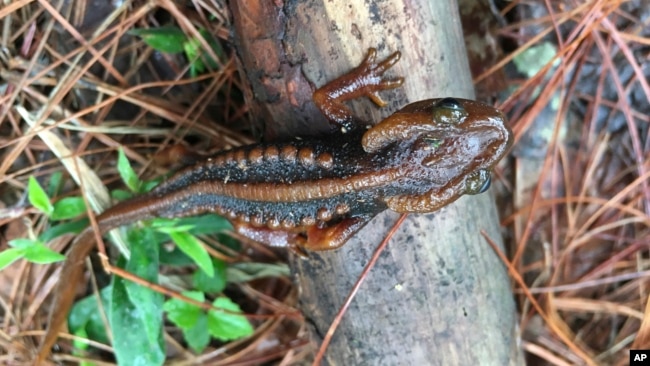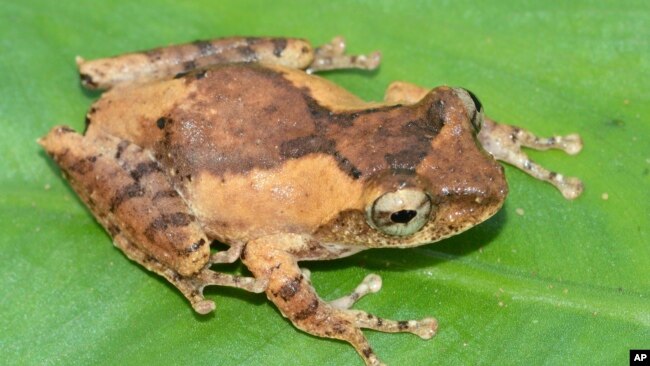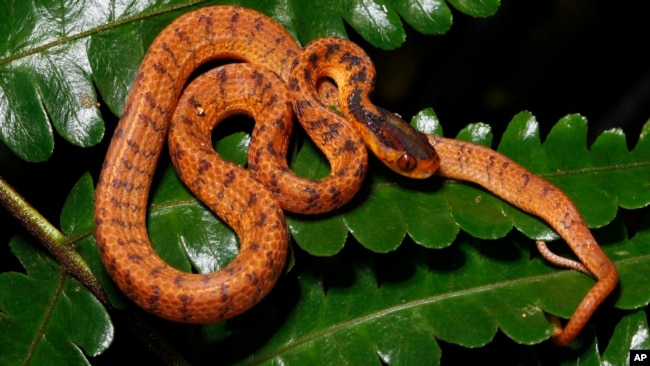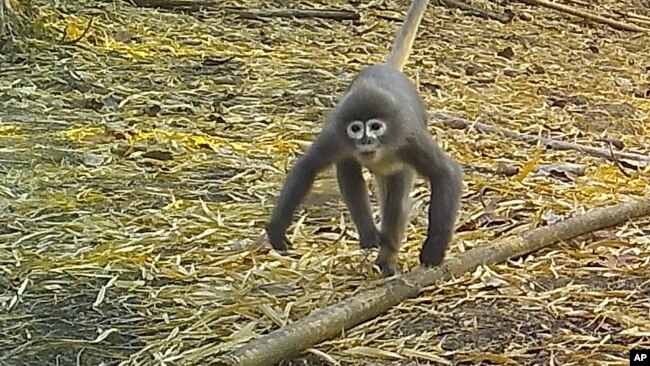メコン川流域、多くの新種を発見
なるほど!!
新種、生き残るための進化なのですね!!
最近、”オシリカジリムシ”と命名された新種発見ニュースには、驚きました。
動物の英単語って、意外と知らないことがおおくて。
メコン川流域で224種の新種を発見(和訳)
Scientists Discover 224 New Species in Mekong Area
Jan.30,2022
世界自然保護基金(WWF)は、2020年に大メコン圏で発見された新種を224種確認しました。この地域には、ベトナム、カンボジア、ラオス、タイ、ミャンマーが含まれます。
その中には、目の周りに白い丸があるサルも含まれています。また、リストには新たに確認された多数の爬虫類、カエルやイモリ、魚類、155種の植物も含まれています。
※ reptiles:【réptàils】 newts:【núːts】
WWFの報告書は、メコンの豊かな野生生物の生息地を保護する必要性を示しています。報告書は、今回の発見は、森林伐採や病気などの害に脅かされる環境下で、種が生き延びる強さを示していると述べています。
K. ヨーガナンド 氏は、WWFのメコン地域の野生生物と野生生物犯罪のリーダーです。彼はロイターに対し、新種は”数百万年の進化の美しい産物”であると語っています。しかし、こんにち、これらの種は”激しい脅威にさらされている”とヨーガナンド 氏は言います、多くの種が説明される前に消滅していると。
また、鮮やかなオレンジ色のツインスラッグヘビなど、複数の国で見られる種もいます。
ポパ・ラングールは、遺伝子の照合により確認されました。最近集められた骨と、100年以上前にイギリスの自然史博物館から発見されたサンプルを比較しました。
このサルは、国際自然保護連合のレッドリストで、絶滅の危機に瀕している種としてリストアップされる候補であるといいます。このサルは、野生ではわずか200~250匹しか生存していないと考えられています。
Scientists Discover 224 New Species in Mekong Area
The World Wildlife Fund, WWF, identified 224 new species discovered in the Greater Mekong area in 2020. The area includes Vietnam, Cambodia, Laos, Thailand and Myanmar.
Among the species is a monkey with white circles around its eyes. The list also included numerous newly identified reptiles, frogs and newts, fish and 155 plant species.
A report by the WWF marks the need to protect rich wildlife habitats in the Mekong. The report said the discoveries demonstrate the strength of species to survive in environments threatened by deforestation, disease and other harms.
K. Yoganand is the WWF’s Mekong leader for wildlife and wildlife crime. He told Reuters that the new species represent “beautiful products of millions of years of evolution.” Today, however, they are "under intense threat,” Yoganand said, with many species disappearing before they are even described.
The newly discovered monkey is called the Popa langur. It got its name because it lives on the hillsides of Myanmar’s former Mt. Popa volcano.
A new type of begonia plant with reddish flowers and a berry-like fruit also was found in a hilly area of Myanmar. The area has a problem with illegal mining and logging.
Scientists have now identified more than 3,000 new species in the Mekong area since 1997, the WWF said.
Scientists used measurements and samples from public collections to compare and identify important elements of the newly discovered animals and plants, the report said.
Researchers say identifying new species can be difficult and sometimes requires several different methods. In one case, frog calls and genetic data were combined to differentiate the Cardamom leaf-litter frog. The animal was found high in the Cardamom mountains in a protected wildlife area.
Some species can be found in more than one country, including the bright orange twin slug snake.
The Popa langur was identified based on genetic matching. Recently gathered bones were compared with samples from Britain's Natural History Museum found more than a century ago.
The WWF worked with the group Fauna and Flora International, FFI, to capture images of the monkeys using camera traps in 2018. FFI reported the discovery late last year.
The monkey is a candidate to be listed as a critically endangered species on the Red List of the International Union for the Conservation of Nature, the report said. Only 200 to 250 of the monkeys are thought to survive in the wild.
Words in This Story
species – n. a group of animals or plants that are similar and can produce young animals or plants
habitat – n. the natural environment of a plant or animal
evolution – n. a gradual process of change and development
logging – n. the activity of cutting down trees in order to get wood that can be sold
sample – n. a small amount of something that gives you information about the thing it was taken from
match – n. a person or thing that is equal to another person or thing



